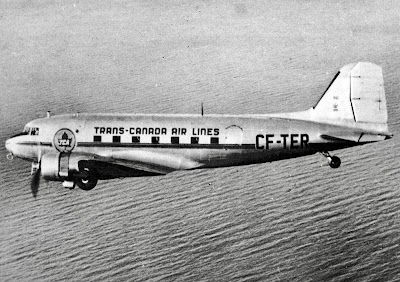In 1954 I had my first airplane flight. I was likely so excited there was no sleep the night before.
My mother took me over to Victoria for the day, a very short up and down from Vancouver on a TCA (Air Canada’s predecessor) DC-3.
Remember, you can click on pictures.
Victoria then was justifiably said to be very British - note Union Jack.
Nearby Esquimalt had been the Royal Navy’s Pacific Station headquarters until 1911. Early settlers retained more than nostalgic connections to Britain. The upper classes raised children who spoke with an English accent despite being Canadian. Later, many from Britain retired to Victoria, attracted by the pleasant climate and that their UK pensions went further than back home. Afternoon tea and cricket were popular. Victoria remains Canada’s most British city, although markedly less so than when I was last there seventy years ago.
Having, last spring, been to Canada’s most easterly point near St. John’s, Newfoundland, I decided, more or less on the spur of the moment, to go west. Not furthest west in the Canadian context, that’s on the Yukon-Alaska border. But as west as sensibly achievable mid-winter. I hoped Victoria would be mild (it was) and, of more importance, largely visitor-free (and that, too, was so).
I also decided to go wild and stay in a posh suite at one of Canada’s best-known hotels, the Empress.
My bedroom looked onto Victoria’s inner harbour …
… and even my shower. I could keep watch on the world while slathered in soap. And, more to point, passersby were spared the discomfiting - albeit distant - sight of me in all my naked glory.
The 1908 Empress is something of an architectural fantasy.
You can research it yourselves, but there are elements of French Renaissance, English neo-Gothic and Tudor thrown together in a memorable confection.
Wandering the interior, I appreciated the original fixtures, including this magnificent postbox from when the now losing money Canada Post was the profitable Royal Mail.
A menu and program suggest that, despite the outbreak of World War Two, a good (and doubtless expensive) time was to be had at the Empress. I’m sorry I missed out on the ‘Mating Dance of Hawaiian Birds’.
However, in the way of these things nowadays, 84 years later you can get an idea of the melody on YouTube.
The Empress was originally a Canadian Pacific Railway hotel and company ships were either empresses or princesses. I do remember as a child desperately wanting to sail on the 1960 Empress of Canada, but that was never to be.
A couple of things I found either unnecessary or overly cute. A (very) faux telephone, one of a number in the hotel’s hallways.
And, mixing croquet and cricket, a twee reference to a game largely played - at least in popular imagination - on 1930s English vicarage lawns.
Mind you, a nearby pub continues the theme.
As an aside, one architect of the Empress, Francis Rattenbury, died in 1935 after being bashed by a croquet mallet. He had not been mistaken for a wooden ball of the type used back then. And that’s something else for you to research.
Staying as I was (and deservedly so) in the hotel’s extra posh part, I had access to a separate lounge with breakfast, afternoon tea and pre-dinner canapés included. This meant I could gorge on as many scones with clotted cream and jam as I wanted …
… and not pay $89 for the Empress’ fabled (and sometimes derided) ’High Tea’. And while making a pig of myself, I could read the local paper.
Headline aside, there’s something else that’s royal about this. Take a close look.
It’s the royal coat of arms. Might have been still somewhat appropriate when I first visited all those years ago, but now?
And so, after scones and, an appropriate time later, excellent crab cakes and salad with BC Grey Monk Pinot Grigio, and key lime pie for dessert, to sleep … burp!

.jpeg)
.jpeg)
.jpeg)
.jpeg)
.jpeg)
.jpeg)
%20(1).jpeg)
.jpeg)
.jpeg)
.jpeg)
.jpeg)
.jpeg)
.jpeg)
.jpeg)
%20-%20The%20Sticky%20Wicket%20(crop%20&%20edit).jpeg)
.jpeg)
.jpeg)
.jpeg)
.jpeg)